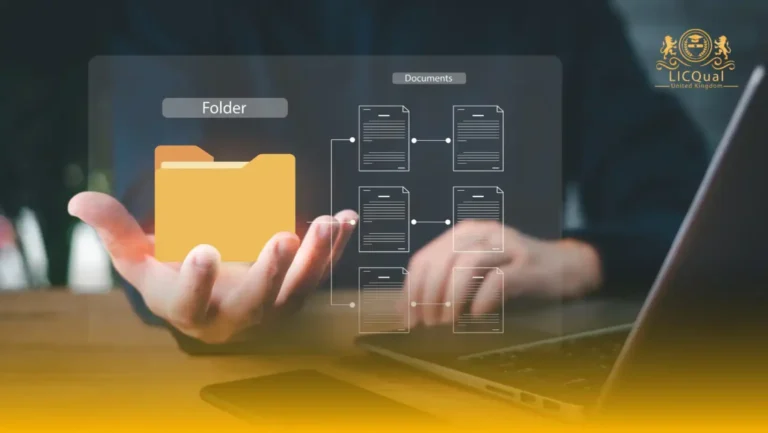The LICQual Professional Rigger Diploma (Level 1 to 3) – 30 Credits is a comprehensive, progressive qualification designed to provide individuals with the knowledge, skills, and experience required to excel as a professional rigger in industries such as construction, oil and gas, marine, and heavy engineering.
This unique diploma offers a structured pathway that covers foundational rigging techniques at Level 1, intermediate concepts at Level 2, and advanced rigging operations at Level 3. With 30 credits awarded upon completion, this diploma is the ultimate qualification for those looking to develop a career in rigging or enhance their technical proficiency in lifting and handling operations.
This course is built for those who wish to acquire a robust understanding of rigging principles, from basic operations to complex and high-risk lifting scenarios. Over the course of this diploma, learners will progressively develop their expertise, gaining a deep understanding of the technical, safety, and regulatory aspects of rigging. By the end of the program, participants will have the confidence and skills to undertake diverse rigging tasks, safely plan and execute lifting operations, and play an integral role in teams responsible for complex lifting operations.
At Level 1, students will focus on basic rigging operations, learning about the selection, use, and inspection of rigging equipment such as ropes, slings, and hoists. Emphasis is placed on safety and understanding the essential principles of load handling, rigging techniques, and the importance of personal protective equipment (PPE).
At Level 2, learners will delve deeper into more complex lifting scenarios, learning advanced load calculations, rigging configurations, and working with cranes and other lifting machinery. Finally, at Level 3, students will focus on mastering the technical aspects of rigging, planning lifts, managing risk assessments, and ensuring compliance with safety regulations in real-world environments.
Throughout the course, students will gain practical experience that reinforces the theoretical knowledge gained in the classroom. The hands-on nature of the training ensures that learners are well-prepared to perform rigging operations in various sectors, with a focus on safety, teamwork, and efficient execution. Students will also explore key topics such as hazard identification, communication protocols, emergency response, and regulatory frameworks such as LOLER (Lifting Operations and Lifting Equipment Regulations) and PUWER (Provision and Use of Work Equipment Regulations).
The LICQual Professional Rigger Diploma is ideal for individuals seeking to pursue a career in rigging or lifting operations, including new entrants to the field, as well as those looking to enhance their qualifications and career prospects. It is also suited for experienced riggers who wish to deepen their understanding of advanced rigging principles and best practices. Whether you’re an entry-level rigger, a technician, or a team leader, this qualification provides the essential skill set needed to excel and ensure safety in high-risk environments.
Upon completion of the LICQual Professional Rigger Diploma (Level 1 to 3) – 30 Credits, graduates will receive a recognized certification that demonstrates their proficiency in all aspects of rigging operations.
This diploma serves as a solid foundation for career advancement, enabling professionals to step into supervisory, managerial, or technical roles in rigging and lifting operations. Whether working in construction, manufacturing, or offshore industries, this qualification ensures that graduates are equipped with the skills needed to contribute to safe, efficient, and effective lifting operations worldwide.
Course Overview
Qualification Title
LICQual Professional Rigger Diploma (Level 1 to 3) – 30 Credits
Total Units
6
Total Credits
30
GLH
120
Qualification #
LICQ2200178
Qualification Specification
To enroll in the LICQual Professional Rigger Diploma , applicants must meet the following criteria:
|
Qualification# |
Unit Title |
Credits |
GLH |
|---|---|---|---|
|
LICQ2200178-1 |
Introduction to Rigging and Safety Protocols |
5 |
20 |
|
LICQ2200178-2 |
Rigging Equipment and Tools: Identification and Handling |
5 |
20 |
|
LICQ2200178-3 |
Lifting Operations and Load Calculations |
5 |
20 |
|
LICQ2200178-4 |
Advanced Rigging Techniques and Systems |
5 |
20 |
|
LICQ2200178-5 |
Rigging for High-Risk Environments |
5 |
20 |
|
LICQ2200178-6 |
Inspection, Maintenance, and Regulatory Compliance |
5 |
20 |
By the end of this course, learners will be able to:
1. Introduction to Rigging and Safety Protocols
- Demonstrate a foundational understanding of rigging concepts and terminology.
- Recognize the importance of safety in rigging operations and apply safety protocols effectively.
- Identify potential hazards and risk factors associated with rigging and lifting operations.
- Develop an understanding of safety equipment and personal protective gear used in rigging activities.
2. Rigging Equipment and Tools: Identification and Handling
- Identify different types of rigging equipment and tools used in lifting operations.
- Understand the proper handling, storage, and maintenance of rigging equipment.
- Demonstrate the ability to select appropriate equipment for specific rigging tasks.
- Explain the limitations and working capacities of rigging tools and equipment.
3. Lifting Operations and Load Calculations
- Perform load calculations to determine the appropriate rigging equipment for lifting operations.
- Understand the principles of load distribution, weight calculations, and center of gravity.
- Apply proper lifting techniques and procedures to ensure safe and efficient operations.
- Demonstrate the ability to conduct a risk assessment for lifting operations and make necessary adjustments.
4. Advanced Rigging Techniques and Systems
- Master advanced rigging techniques and systems, including complex lifting scenarios.
- Understand the principles of multi-point and multi-line rigging setups.
- Apply techniques for rigging in challenging environments, including confined spaces or complex configurations.
- Evaluate the use of mechanical advantage systems, such as pulleys and winches, in advanced rigging.
5. Rigging for High-Risk Environments
- Identify and understand the unique challenges of rigging in high-risk environments, such as offshore, construction, or hazardous areas.
- Develop strategies for ensuring safety and operational efficiency in high-risk rigging operations.
- Demonstrate the application of specialized equipment and techniques for working in hazardous environments.
- Evaluate risk management practices and implement control measures to mitigate hazards in high-risk settings.
6. Inspection, Maintenance, and Regulatory Compliance
- Conduct inspections of rigging equipment to ensure it meets safety standards and operational readiness.
- Implement maintenance procedures to prolong the life and reliability of rigging tools and equipment.
- Understand and apply regulatory requirements and industry standards for rigging operations.
- Demonstrate knowledge of reporting and documentation practices for maintaining compliance with safety and regulatory standards.
This diploma is ideal for:
Assessment and Verification
All units within this qualification are subject to internal assessment by the approved centre and external verification by LICQual. The qualification follows a criterion-referenced assessment approach, ensuring that learners meet all specified learning outcomes.
To achieve a ‘Pass’ in any unit, learners must provide valid, sufficient, and authentic evidence demonstrating their attainment of all learning outcomes and compliance with the prescribed assessment criteria. The Assessor is responsible for evaluating the evidence and determining whether the learner has successfully met the required standards.
Assessors must maintain a clear and comprehensive audit trail, documenting the basis for their assessment decisions to ensure transparency, consistency, and compliance with quality assurance requirements.







